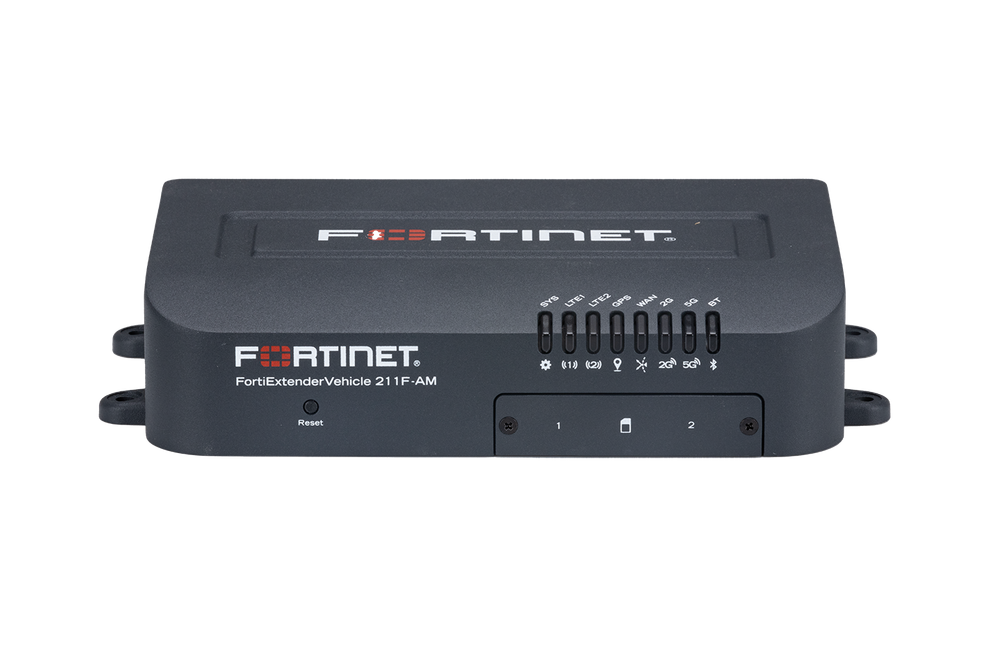
- Support Forum
- Knowledge Base
- Customer Service
- Internal Article Nominations
- FortiGate
- FortiClient
- FortiADC
- FortiAIOps
- FortiAnalyzer
- FortiAP
- FortiAuthenticator
- FortiBridge
- FortiCache
- FortiCare Services
- FortiCarrier
- FortiCASB
- FortiConverter
- FortiCNP
- FortiDAST
- FortiData
- FortiDDoS
- FortiDB
- FortiDNS
- FortiDLP
- FortiDeceptor
- FortiDevice
- FortiDevSec
- FortiDirector
- FortiEdgeCloud
- FortiEDR
- FortiEndpoint
- FortiExtender
- FortiGate Cloud
- FortiGuard
- FortiGuest
- FortiHypervisor
- FortiInsight
- FortiIsolator
- FortiMail
- FortiManager
- FortiMonitor
- FortiNAC
- FortiNAC-F
- FortiNDR (on-premise)
- FortiNDRCloud
- FortiPAM
- FortiPhish
- FortiPortal
- FortiPresence
- FortiProxy
- FortiRecon
- FortiRecorder
- FortiSRA
- FortiSandbox
- FortiSASE
- FortiSASE Sovereign
- FortiScan
- FortiSIEM
- FortiSOAR
- FortiSwitch
- FortiTester
- FortiToken
- FortiVoice
- FortiWAN
- FortiWeb
- FortiAppSec Cloud
- Lacework
- Wireless Controller
- RMA Information and Announcements
- FortiCloud Products
- ZTNA
- 4D Documents
- Customer Service
- Community Groups
- Blogs
- Fortinet Community
- Blogs
- Unpacking the CVE-2019-7256 Command Injection Vuln...
- Subscribe to RSS Feed
- Mark as New
- Mark as Read
- Bookmark
- Subscribe
- Printer Friendly Page
- Report Inappropriate Content
What is CVE-2019-7256?
CVE-2019-7256 is a serious command injection vulnerability affecting Linear eMerge E3-Series access control systems. It stems from improper sanitization of user inputs, enabling remote attackers to inject and execute arbitrary commands.
The severity of this vulnerability is high due to the potential for unauthorized command execution. Attackers can gain complete control over the eMerge E3-Series systems, allowing them to alter configurations, access sensitive data, or disrupt operations. This poses a significant security risk for organizations that depend on these systems for physical security and access management.
This vulnerability highlights the importance of robust input validation and secure coding practices in developing network-connected devices. To mitigate CVE-2019-7256, organizations should promptly apply vendor-supplied patches or updates. Additionally, they should implement network segmentation, access controls, and monitoring to detect and respond to unauthorized activities or exploitation attempts.
By addressing CVE-2019-7256 with timely updates and comprehensive security measures, organizations can reduce the risk of unauthorized access and ensure their access control systems remain secure and functional.
The Significance of CVE-2019-7256
The Linear eMerge E3-Series stands as a widely adopted access control system across diverse commercial and industrial environments, offering robust management of building access. This system is instrumental in regulating entry to facilities, securing sensitive areas, and ensuring operational safety within organizations.
However, the discovery of CVE-2019-7256, a critical command injection vulnerability within the Linear eMerge E3-Series, exposes significant security risks. This vulnerability stems from inadequate validation of user inputs, allowing remote attackers to inject and execute arbitrary commands on the system. Exploitation of CVE-2019-7256 grants attackers unauthorized control over the eMerge E3-Series access control infrastructure.
For adversaries, compromising the eMerge E3-Series represents a strategic opportunity to breach physical security perimeters. By exploiting this vulnerability, attackers can manipulate access permissions, disable security protocols, or gain unrestricted entry to restricted areas within facilities. Unauthorized access compromises operational integrity jeopardizes sensitive assets, and potentially endangers personnel safety.
Given the critical role of access control systems in maintaining facility security, the exploitation of CVE-2019-7256 underscores the imperative for immediate remediation measures. Organizations must swiftly apply vendor-provided patches or updates to mitigate the vulnerability. Additionally, implementing stringent access controls, network segmentation, and continuous monitoring are essential strategies to detect and thwart unauthorized activities targeting access control systems.
By addressing CVE-2019-7256 proactively and fortifying overall security measures, organizations can uphold the integrity of their physical security perimeters, safeguard critical assets, and mitigate the operational risks associated with unauthorized access and control.
How Critical is CVE-2019-7256?
CVE-2019-7256 has garnered attention for its profound impact, underscored by a severity score of 10/10. This rating signifies the vulnerability's critical nature and its potential to be exploited remotely by attackers, even those with minimal technical expertise. Such a high severity score categorizes CVE-2019-7256 as a top priority concern for security administrators and organizations relying on Linear eMerge E3-Series access control systems.
The vulnerability's criticality stems from its root cause: improper validation of user-supplied inputs, which allows attackers to inject and execute arbitrary commands remotely. Exploitation of CVE-2019-7256 grants unauthorized access and control over the eMerge E3-Series infrastructure. This capability empowers attackers to manipulate access permissions, compromise security protocols, and breach physical security perimeters within commercial and industrial facilities.
Security administrators must respond swiftly to mitigate CVE-2019-7256's risks by applying vendor-supplied patches or updates promptly. These patches typically address the vulnerability by improving input validation and implementing safeguards to prevent unauthorized command execution. Additionally, organizations should bolster their defenses with network segmentation, access controls, and continuous monitoring to detect and thwart potential exploitation attempts.
The severity score of 10/10 emphasizes the critical imperative for proactive security measures and swift remediation actions. By prioritizing the mitigation of CVE-2019-7256 and strengthening overall security postures, organizations can safeguard their access control systems, protect sensitive assets, and uphold operational continuity against evolving cyber threats.
Mitigating the Risks of CVE-2019-7256
It is crucial for organizations using affected Linear eMerge E3-Series systems to apply available firmware updates to mitigate the risks associated with this vulnerability. Patches have been issued that address the command injection flaw, and users are urged to update their systems promptly to protect against potential exploits.
FortiWeb Protection
For organizations utilizing the Linear eMerge E3-Series access control systems, it is imperative to take immediate action by applying available firmware updates to mitigate the risks associated with CVE-2019-7256. This critical command injection vulnerability poses significant threats due to its potential exploitation by attackers to execute arbitrary commands remotely.
The severity of CVE-2019-7256 necessitates prompt application of vendor-provided patches, which specifically address the vulnerability by enhancing input validation mechanisms and securing command execution processes. By installing these updates, organizations can effectively fortify their eMerge E3-Series systems against unauthorized access and control.
Fortinet offers robust protection against vulnerabilities that enable attackers to execute arbitrary commands remotely. Fortinet’s comprehensive suite of security solutions, including firewall technologies and intrusion prevention systems (IPS), is specifically designed to detect and mitigate such exploits effectively. Fortinet's IPS monitors network traffic in real-time, employing advanced detection mechanisms such as signature-based detection and behavioral analysis to identify and block attempts to exploit command injection vulnerabilities. Additionally, Fortinet's Web Application Firewall (WAF) provides targeted defense for web-based command injection attacks by inspecting HTTP and HTTPS traffic and filtering out malicious requests that attempt to inject commands into web applications. Their Secure SD-WAN solution extends protection to branch offices and remote locations, ensuring consistent enforcement of security policies to detect and prevent command injection attempts at the network edge. With integrated threat intelligence and automated response capabilities through the Fortinet Security Fabric, organizations can proactively defend against sophisticated threats, maintaining the integrity and security of their network environments against remote command execution exploits.
Conclusion
The disclosure and subsequent patching of CVE-2019-7256 underscore the persistent challenges involved in securing access control systems against remote attacks. This vulnerability, which allowed for remote command execution in Linear eMerge E3-Series access control systems due to inadequate input validation, serves as a stark reminder of the critical importance of proactive security measures.
Organizations must maintain a vigilant approach to cybersecurity by promptly applying security updates and patches provided by vendors. This proactive stance is crucial in mitigating the risks associated with vulnerabilities like CVE-2019-7256, as timely updates often include fixes that address known security gaps and bolster defenses against potential exploits.
FortiWeb, as a leading provider of advanced security solutions, stands ready to assist organizations in fortifying their defenses against complex threats such as CVE-2019-7256. FortiWeb's Web Application Firewall (WAF) offers robust protection by monitoring and filtering HTTP/HTTPS traffic for malicious activities, including attempts to exploit command injection vulnerabilities. This proactive defense approach helps organizations detect and block unauthorized access attempts before they can compromise sensitive systems or data.
By leveraging FortiWeb's advanced security capabilities and adhering to best practices in cybersecurity, organizations can enhance their resilience against evolving threats to access control systems. Continuous monitoring of network traffic and prompt response to potential signs of intrusion further strengthens defenses, ensuring the ongoing integrity and security of access control operations.
In summary, the incident surrounding CVE-2019-7256 serves as a critical reminder for organizations to remain vigilant and proactive in securing their access control systems. FortiWeb remains committed to supporting customers with advanced security solutions that effectively mitigate risks and safeguard against remote attacks targeting critical infrastructure.
For further information on CVE-2019-7256 and to ensure your systems are protected, please review the latest security advisories from your device manufacturer and FortiWeb.
FortiGuard Outbreak Alerts
Nice Linear eMerge Command Injection Vulnerability | Outbreak Alert | FortiGuard Labs
You must be a registered user to add a comment. If you've already registered, sign in. Otherwise, register and sign in.
The Fortinet Security Fabric brings together the concepts of convergence and consolidation to provide comprehensive cybersecurity protection for all users, devices, and applications and across all network edges.
Copyright 2025 Fortinet, Inc. All Rights Reserved.
